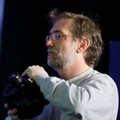(Subscribe to this discussion)
It is well known that the ear may not be sensitive to small phase perturbations. In a conventional flat-baffled two-way loudspeaker system, the positions of the sound sources are noncoincident in the crossover region. In this region, the interference effects give rise to amplitude distortions which, although clearly audible, can be difficult to isolate. Both computer simulations of the equivalent system and practical measurements show that it is possible to eliminate these interference effects in a conventional flat baffle loudspeaker provided that 1) both the amplitude and phase responses of the crossover network are arranged to complement the drive units, and 2) the signal to the high frequency unit is fed via a frequency independent delay line. By replacing this fixed delay with a stopped baffle, it now becomes possible to produce a loudspeaker with a frequency independent time delay. The use of filler drivers to achieve the phase relationship 0=aw, where 0 is phase angle between the radiated acoustic pressure and the loudspeaker drive signal and w is the signal frequency, gives a linear phase loudspeaker system correct to 0-Hz. In practice, providing that the loudspeaker produces a constant, frequency independent group time delay, within its passband, then the phase relationship 0=aw+b is indistinguishable from 0=aw.
Authors:
Bank, G.; Hathaway, G. T.
Affiliation:
Rank Hi Fi, Bradford, England
AES Convention:
56 (March 1977)
Paper Number:
1216
Publication Date:
March 1, 1977
Click to purchase paper as a non-member or you can login as an AES member to see more options.
 Scott Dorsey |
Comment posted April 3, 2018 @ 16:27:01 UTC
(Comment permalink)
The title of this paper is pretty misleading, and the abstract only hints about what it's really about. Back when this was written, people were only starting to realize that you couldn't design multi-way speaker systems with each driver in isolation; phase shifts caused by the crossover, the drivers, and positioning would mean that they would not sum up together as expected. This paper makes that point but shows some methods for changing positioning or adding all-pass networks to control the phase over the regions where the drivers overlap can eliminate these problems on-axis. Unfortunately this paper does not point out that as the listener moves off-axis, his distance to the individual drivers changes (assuming the drivers are not in the same physical location as with a coaxial speaker) and consequently the measured response changes. Back when this paper was written, people were just happy to get things to work out right on-axis and that was an advance in itself. (Respond to this comment)
|
![]() To be notified of new comments on this paper you can
subscribe to this RSS feed.
Forum users should login to see additional options.
To be notified of new comments on this paper you can
subscribe to this RSS feed.
Forum users should login to see additional options.
If you are not yet an AES member and have something important to say about this paper then we urge you to join the AES today and make your voice heard. You can join online today by clicking here.
